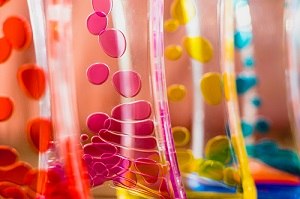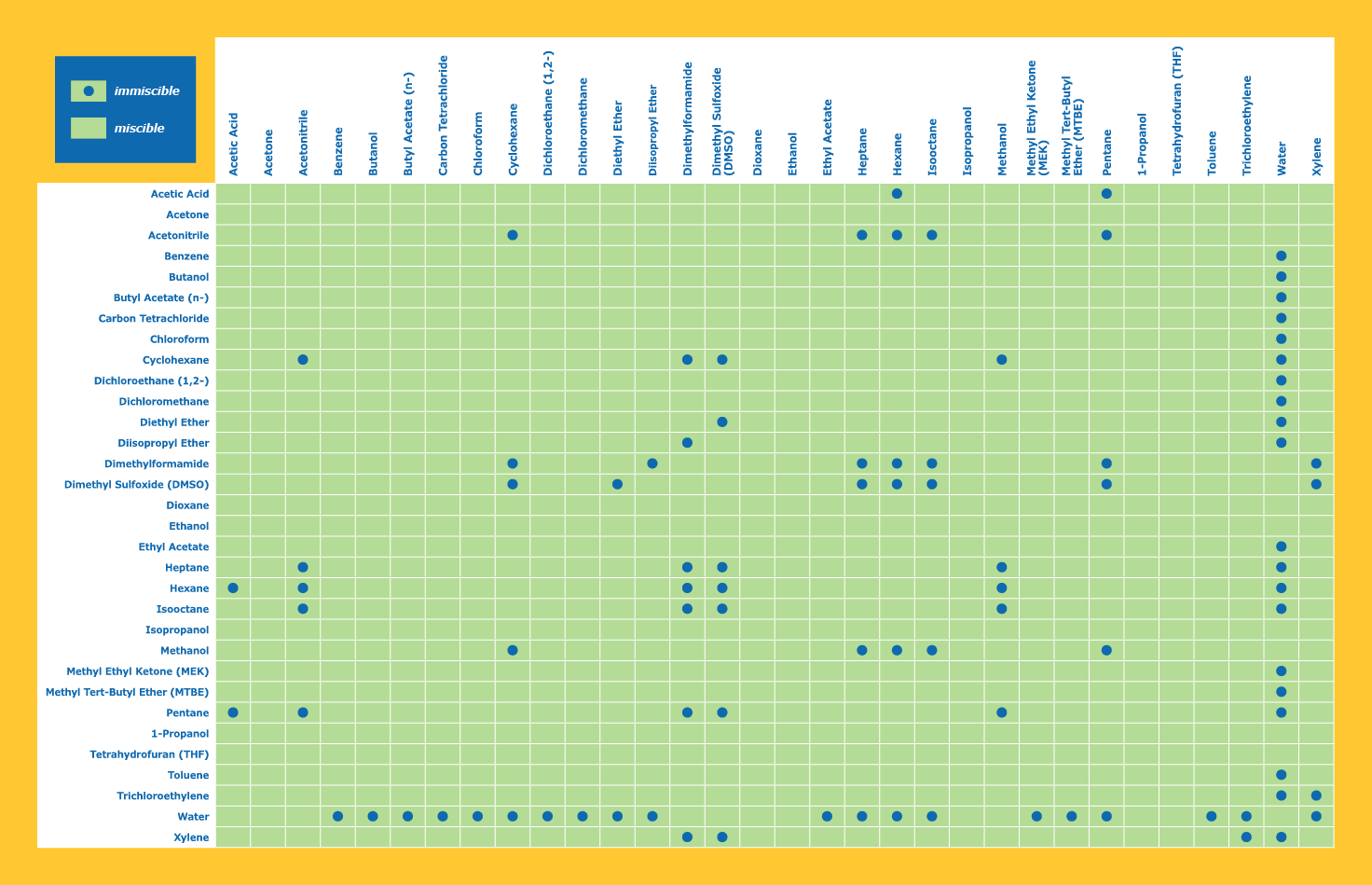Solvent Miscibility Table

What is Miscibility?
Miscibility defines how substances combine (or mix) to form a homogenous solution without precipitates. Miscibility most often refers to liquids but can also apply to gas and solid phases.
Research concerning miscibility often involves the materials science chemistry domain where additional strategies to predict substance interactions could accelerate discoveries. Specific applications have been reported in several areas:
- polymer research for pharmaceuticals
- novel solvents for advanced materials such as organic semiconductors
- ionic liquids used as electrolytes, as in the case of rechargeable lithium-ion batteries
How to Determine Miscibility
The most common determination of miscibility is by visual evaluation. If two substances form a layer, they are clearly immiscible. More precise methods of determination include chromatographic analysis such as spectroscopy as well as viscometry, osmetry, and calorimetry.
It's easy enough to look up the miscibility of common laboratory solvents on charts like the one provided below; however, novel and new substances or solvent combinations are unlikely to be listed. In these cases, miscibility can be predicted employing the same general rules for solubility. Like dissolves like. Compounds with similar bond types are more likely be soluble (and sometimes miscible).
How is the Miscibility of a Liquid with Water related to the Liquid's Polarity?
Polarity has a direct effect on solubility (and miscibility). Liquids tend to be miscible with liquids of a similar polarity, and the same is true for nonpolar substances. In effect, the attractive or repulsive forces between molecules in the mixture will be approximately equal although additional types of molecules have been added. A liquid with a similar polarity to water should therefore be miscible in water.
Measuring Polarity
Bond dipole moment is the measure of the polarity of a chemical bond. It is measured in 0 to 11 debyes (D), with 0 indicating no dipole moment and 11 being strongly polar. For many substances, such as covalently bound liquids, it's useful to know the polarity of an entire molecule rather than its individual bonds. Chemists approximate the vector sum of a molecule's bond dipole moments to be an estimate of the molecule's polarity. Bond dipole moment measurements can be found on individual solvent pages in our solvent center.
Solvent Miscibility Chart
Miscibility Chart Downloads
Our solvent miscibility chart is available free for download. Share it with friends, students, or teachers. Just make sure to link back to this page.
Got feedback about our study and lab tools? Use the links above to contact us or leave a comment on one of our social media accounts.
| Downloadable PDF | Printable Image | SVG (in-browser) |
Solubility and Miscibility
Solubility and miscibility describe similar phenomena, but they are not the same.
Solubility exists on a spectrum. Substances may combine together poorly or very well, and it's possible to describe solutions as "partially soluble" or "mostly soluble."
Miscibility, however, is an absolute property that is not expressed in degrees. When substances are miscible, there are no layering effects, precipitates, partial mixing, or separation. Miscible means the substances mix completely.
If two substances are miscible, they are also completely soluble in one another irrespective of the order of introduction. For example, tetrahydrofuran (THF) and water are miscible.
Miscibility Gap
A miscibility gap occurs when the substances being mixed exist at more than one phase and as a result experience a gap in miscibility. In other words, the substances are unable to mix because they do not exist in the same phase or in the compatible phase under the conditions. Phase is affected by temperature and pressure.
如要继续阅读,请登录或创建帐户。
暂无帐户?